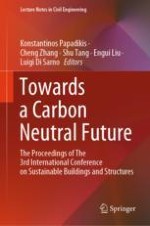2024 | OriginalPaper | Buchkapitel
Assessing Economic, Social and Environmental Implications of Implementing Sustainability in the Built Environment
verfasst von : C. S. Goh, Shamy Y. M. Chin
Erschienen in: Towards a Carbon Neutral Future
Verlag: Springer Nature Singapore
Aktivieren Sie unsere intelligente Suche, um passende Fachinhalte oder Patente zu finden.
Wählen Sie Textabschnitte aus um mit Künstlicher Intelligenz passenden Patente zu finden. powered by
Markieren Sie Textabschnitte, um KI-gestützt weitere passende Inhalte zu finden. powered by
